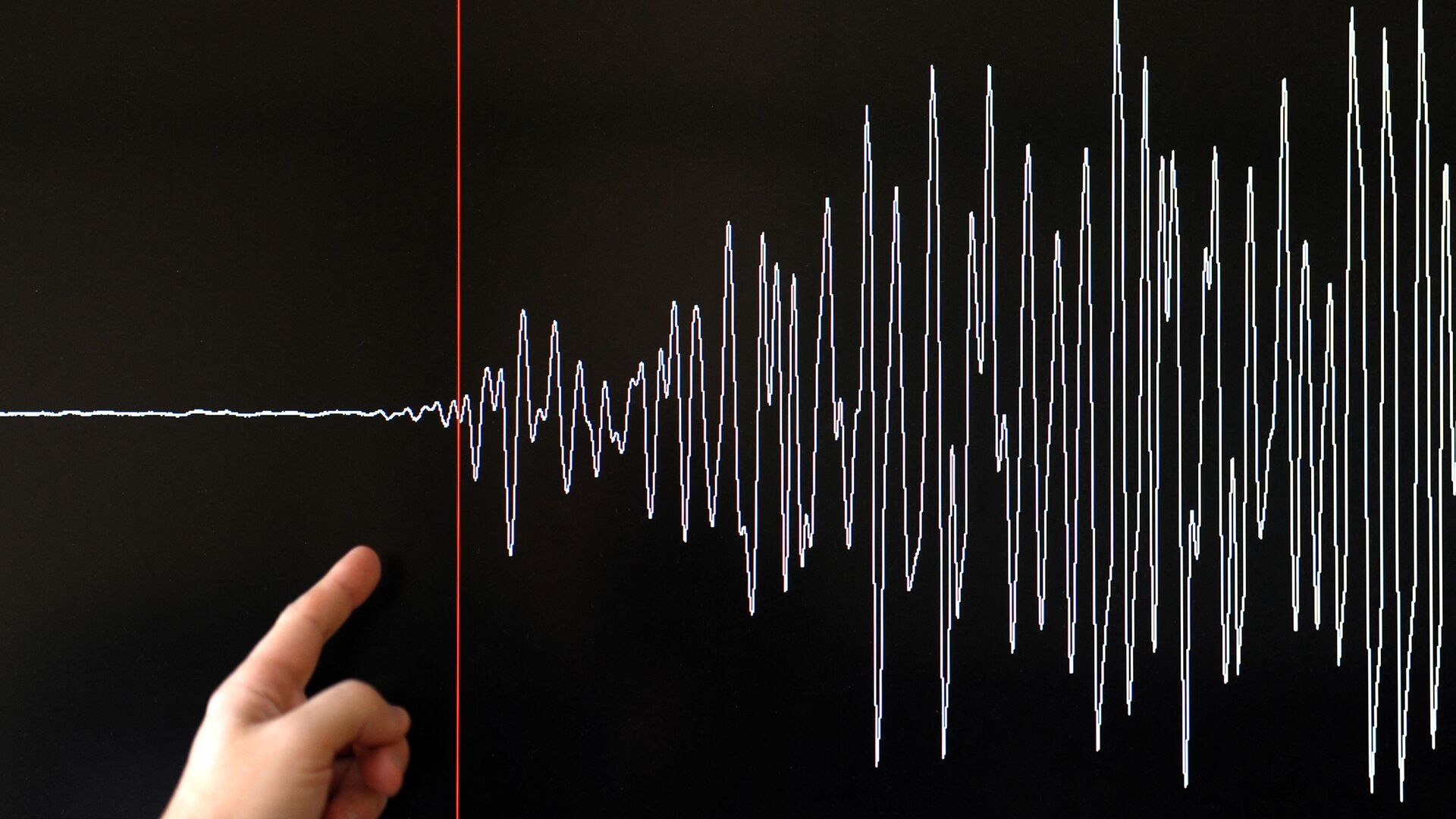https://sputnikglobe.com/20220208/mountain-sized-rock-buried-miles-beneath-japans-coast-may-act-as-a-magnet-for-earthquakes---study-1092843505.html
Mountain-Sized Rock Buried Miles Beneath Japan's Coast May Act as a 'Magnet for Earthquakes' - Study
Mountain-Sized Rock Buried Miles Beneath Japan's Coast May Act as a 'Magnet for Earthquakes' - Study
Sputnik International
Researchers have used seismic imaging data collected from the Japanese government's extensive network of earthquake monitoring sensors to create a detailed... 08.02.2022, Sputnik International
2022-02-08T11:15+0000
2022-02-08T11:15+0000
2022-02-08T11:15+0000
japan
earthquake
seismic zones
university of texas
https://cdn1.img.sputnikglobe.com/img/07e5/03/04/1082255122_0:159:3077:1890_1920x0_80_0_0_b4c2a55e3061cab6eb49d884e365d6a1.jpg
A mountain-sized rock buried under the coast of southern Japan could be acting as a magnet, or a "lightning rod" for earthquakes in the region, a new study led by researchers from the University of Texas has claimed.The high-definition 3D model shows the Pluton as a red bulge near the Nankai subduction zone, which is on Japan's southern coast. Subduction zones are spots where the Earth's tectonic plates collide or slide past each other. The regions above the zones are known to be particularly prone to earthquakes, tsunamis, or volcanic eruptions.The study marks the first time that scientists have been able to identify the "full extent" of the Kumano Pluton, which was first spotted in 2006. The team of researchers involved in the study pieced together seismic data collected over a span of 20 years and fed it into UT's LoneStar5 supercomputer in order to frame the "high-definition" 3D model of the Pluton.Shuichi Kodaira, the director of the Japan Agency for Marine Earth Science and Technology, says that the findings will help to get an idea on whether another major earthquake is building in the Nankai subduction zone. Kodaira co-authored a paper based on the new findings and published it in the scientific journal Nature Geoscience on 3 February.The 3D model of the Pluton has also shown that it diverts buried groundwater into the Earth's interior.Adrien Arnulf, the study's lead author and a research assistant at the University of Texas Institute for Geophysics, has described the findings as "eye opening" and said that they could lead geophysicists to mull creating 3D images of other seismically volatile spots under the Earth's surface.Places such as northeast Japan, New Zealand, and Cascadia in the US Pacific Northwest have other subduction zones and major quakes have hit all these regions in the past.
https://sputnikglobe.com/20210328/always-a-possibility-japan-at-risk-of-new-devastating-earthquakes-authorities-warn-1082475105.html
japan
Sputnik International
feedback@sputniknews.com
+74956456601
MIA „Rosiya Segodnya“
2022
News
en_EN
Sputnik International
feedback@sputniknews.com
+74956456601
MIA „Rosiya Segodnya“
Sputnik International
feedback@sputniknews.com
+74956456601
MIA „Rosiya Segodnya“
japan, earthquake, seismic zones, university of texas
japan, earthquake, seismic zones, university of texas
Mountain-Sized Rock Buried Miles Beneath Japan's Coast May Act as a 'Magnet for Earthquakes' - Study
Researchers have used seismic imaging data collected from the Japanese government's extensive network of earthquake monitoring sensors to create a detailed model of Kumano Pluton, one of the most seismically volatile regions on Earth.
A mountain-sized rock buried under the coast of southern Japan could be acting as a magnet, or a "lightning rod" for earthquakes in the region, a
new study led by researchers from the University of Texas has claimed.
A 3D visualisation of the subsurface rock, known as Kumano Pluton, shows that it has been "diverting tectonic energy into points along its sides where several of the region's largest earthquakes have happened", as per researchers.
The high-definition 3D model shows the Pluton as a red bulge near the Nankai subduction zone, which is on Japan's southern coast. Subduction zones are spots where the Earth's tectonic plates collide or slide past each other.
The regions above the zones are known to be particularly
prone to earthquakes, tsunamis, or volcanic eruptions.
The study marks the first time that scientists have been able to identify the "full extent" of the Kumano Pluton, which was first spotted in 2006.
The team of researchers involved in the study pieced together seismic data collected over a span of 20 years and fed it into UT's LoneStar5 supercomputer in order to frame the "high-definition" 3D model of the Pluton.
Shuichi Kodaira, the director of the Japan Agency for Marine Earth Science and Technology, says that the findings will help to get an idea on whether another major earthquake is building in the Nankai subduction zone.
Kodaira co-authored a paper based on the new findings and published it in the scientific journal Nature Geoscience on 3 February.
"We cannot predict exactly when, where, or how large future earthquakes will be, but by combining our model with monitoring data, we can begin estimating near-future processes", the Japanese geophysicist said.
The 3D model of the Pluton has also shown that it diverts buried groundwater into the Earth's interior.
"The researchers think the pluton's interference with the wider subduction zone is influencing the tectonic forces that cause earthquakes", the researchers say.
Adrien Arnulf, the study's lead author and a research assistant at the University of Texas Institute for Geophysics, has described the findings as "eye opening" and said that they could lead geophysicists to mull creating 3D images of other
seismically volatile spots under the Earth's surface.
Places such as northeast Japan, New Zealand, and Cascadia in the US Pacific Northwest have other subduction zones and major quakes have hit all these regions in the past.




